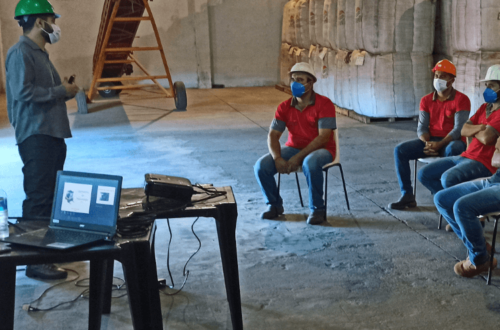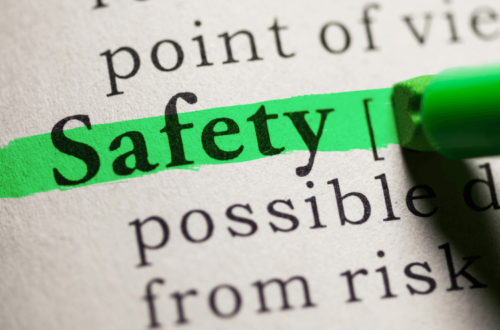
Top 10 Workplace Safety Tips Every Employee Should Know
Workplace safety is a paramount concern for both employees and employers. Ensuring a safe work environment not only protects the well-being of workers but also contributes to increased productivity and reduced downtime due to accidents. As an employee, it is crucial to be proactive in safeguarding your own safety and that of your colleagues. This article presents the top 10 workplace safety tips that every employee should know and follow diligently.

Tip 1: Familiarize Yourself with Emergency Procedures
Emergency situations can arise unexpectedly, and being prepared is crucial. Take the time to familiarize yourself with emergency exits, evacuation routes, and assembly points. Knowing the location and proper usage of fire extinguishers and first-aid kits can make a significant difference during critical moments. Regularly participate in emergency drills to reinforce your knowledge and responsiveness.
Tip 2: Practice Proper Lifting Techniques
Many workplace injuries stem from improper lifting of heavy objects. To protect your back and reduce strain, use proper lifting techniques. Bend your knees, keep your back straight, and lift with your legs, not your back. If an object is too heavy or awkward to lift, seek help from a colleague or use lifting aids whenever possible.
Tip 3: Keep Work Areas Clean and Organized
A cluttered and messy workspace poses numerous hazards. Keep your work area clean and well-organized to minimize tripping hazards and prevent accidents. Always return tools and equipment to their designated storage spaces after use. Properly store chemicals and hazardous materials in their appropriate containers and label them accordingly.
Tip 4: Utilize Personal Protective Equipment (PPE)
Personal Protective Equipment (PPE) plays a vital role in safeguarding employees from various workplace hazards. Depending on the job and its associated risks, PPE may include safety goggles, gloves, hard hats, earplugs, and more. Ensure that you wear the right PPE for the task at hand and that it fits properly. Regularly inspect and maintain your PPE to ensure its effectiveness.
Tip 5: Be Mindful of Ergonomics
Ergonomics is the study of designing and arranging workspaces to maximize efficiency and reduce the risk of injuries. Poor ergonomics can lead to musculoskeletal disorders and chronic pain. Adjust your workstation to maintain proper posture and reduce strain on your body. Use ergonomic chairs, keyboard trays, and monitor stands to create a comfortable and safe workspace.
We spoke with Wendell, who works for one of the highest rated fence companies in Tyler Texas, and he told us that, in addition to ergonomic hammers, he make sure his employees get regular breaks. The nature of a fencing business involves a lot of work on ladders and a lot of work down low. By taking proper breaks, Wendell believes his fencing contractors see less injuries and perform better.
Tip 6: Avoid Distractions and Stay Focused
Distractions in the workplace can be dangerous, especially in high-risk areas. Always remain focused on the task at hand and avoid engaging in activities that could divert your attention. Refrain from using personal devices or taking unnecessary breaks when operating machinery or working in hazardous environments.
Tip 7: Report Potential Hazards Immediately
If you notice any safety hazards or potential risks in the workplace, report them immediately to your supervisor or safety personnel. Open communication about safety concerns is essential to prevent accidents and address issues promptly. Taking early action can prevent minor hazards from escalating into serious incidents.
Tip 8: Take Regular Breaks and Manage Fatigue
Fatigue can impair judgment and reaction times, leading to an increased risk of accidents. Take regular breaks throughout the workday and ensure you get enough rest outside of work. Proper time management and maintaining a healthy work-life balance can help reduce fatigue and improve overall safety.
Tip 9: Follow Lockout/Tagout Procedures
Lockout/Tagout procedures are critical for preventing accidents when working with energized equipment or machinery. Always comply with these protocols when conducting maintenance or repairs on machinery. Following proper lockout/tagout procedures ensures that equipment is safely shut down and unable to start unexpectedly, protecting you and your colleagues from potential harm.
Tip 10: Participate in Safety Training and Programs
Safety training is an ongoing process that equips employees with essential knowledge and skills to identify and mitigate workplace hazards. Attend all safety training sessions provided by your employer and actively engage in safety programs. Be proactive in suggesting safety improvements and participate in safety committees or initiatives to promote a safety-conscious culture within the workplace.
Conclusion
Prioritizing workplace safety is a shared responsibility that every employee must uphold. By adhering to these top 10 workplace safety tips, you contribute to creating a safer work environment for yourself and your colleagues. Take ownership of your safety, stay vigilant, and collaborate with your employer to foster a workplace culture that values and prioritizes the well-being of everyone. Together, we can build a safer and more productive workplace for all.


